Making time for play
Seven Virginia Tech faculty members and administrators share why making time for hobbies matters, even when life gets busy.
Free time? What free time?
It’s a scarce commodity, for sure, especially in those fiercely hectic first weeks of a new semester. Yet carving out time for pastimes we love can boost mental and physical health. It can energize and calm us, spark aha moments, and cleanse our intellectual palates. Our spare-time pursuits give us a life beyond work, reminding us of who we really are at our cores. They make us us.
That’s why we admire these Virginia Tech faculty members who also happen to be aficionados avidly pursuing a particular passion, from boxing and weaving to motorcycle riding and improv comedy. Here, they share what they love about their hobbies — and how having fun in the off hours makes them even better at their jobs.
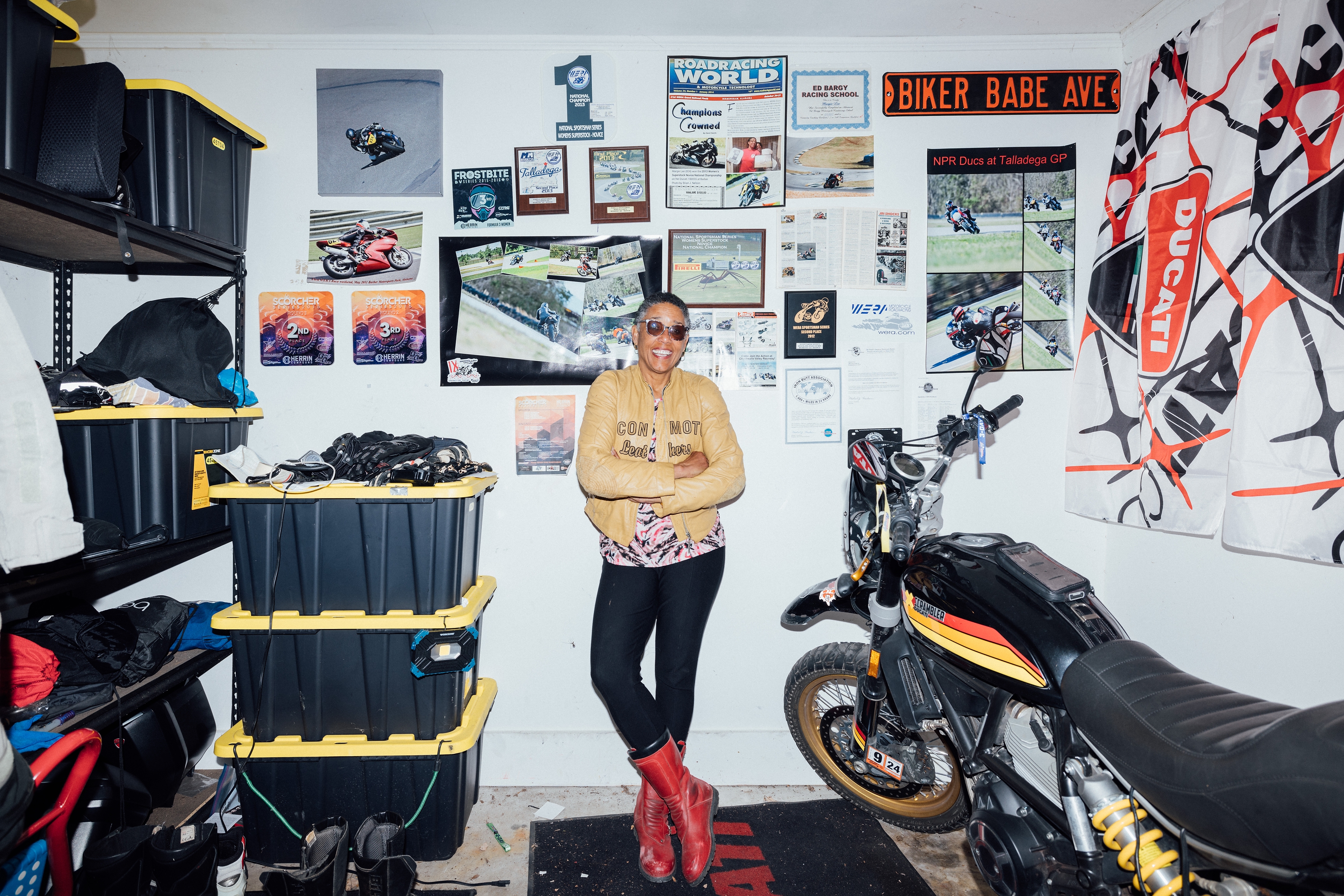
The motorcycle rider
Margie Lee, professor and department head of biomedical sciences and pathobiology, associate dean of research at Virginia-Maryland College of Veterinary Medicine, and interim director of the Animal Cancer Care and Research Center
Of all the thrill-seeker sports you could do, this is probably one of the safest ones. But sometimes you crash. I’ve crashed twice at Talladega, had big ones at Jennings, that one at turn 9 at Virginia International Raceway, where I thought the track went left but it went right. One day I was riding up on the Blue Ridge Parkway, and I didn't realize there was a section on the north side of the mountains that’s always ice. I rounded a blind corner doing about 60 and there was no place to go, just a rock face on one side and a guard rail with a sheer drop off on the other. Oh well. BAM! I buy $700 helmets because I don’t have a $100 head.
As a woman, you get hilarious comments. If you stop at the gas station, someone will say, “I’ve never seen a woman ride.” But the fastest-growing population of women riders are middle-aged women who start when their kids are grown up. Once in New Orleans, three nuns walked by, took one look at me and my friend on our bikes, and said, “We’re going to do that.” For some women, once they start riding, they’re a whole different person. I think being Motorcycle Margie makes me a better administrator because I'm bold, and depending on the situation, you need to be bold.
I've got a friend in northern Italy who calls this part of Virginia motorcycle paradise. I go down Luster’s Gate [Road] on my Ducati sport bike and come up Ellett Road to Main Street, and when the weather’s nice that’s my morning and evening commute. When I'm riding, I experience things I never would have noticed in a car. I can hear the birds. I can see the sky. It smells like fresh air and flowers. It smells like freedom. You get endorphins when you ride like you do when you run, so when you go back to work, you're not stressed, at least for 30 seconds.


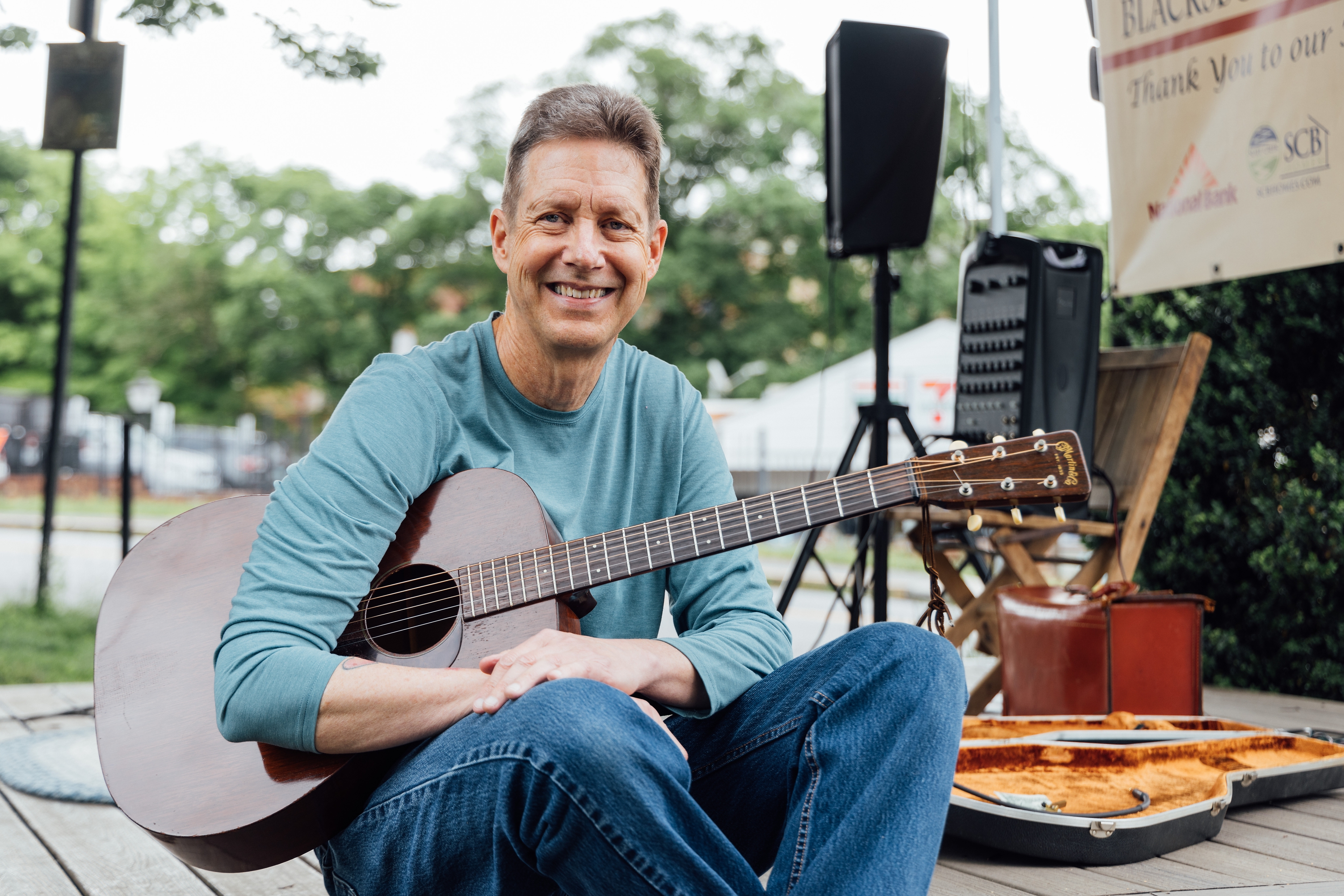
The singer-songwriter
Paul Heilker, associate dean for academic affairs in the Honors College and associate professor of English
One of my guitars lives in an apartment near the Steger Center in Riva San Vitale, Switzerland, where I teach in the Presidential Global Scholars program every spring. Three years ago the architecture professor Heinrich Schnoedt was there with some students, and he said, “You will write a song about our experiences here.” It wasn't a request, it was an assignment. So I wrote the first Riva song about our experiences there. Now there are three. The chorus for this year’s song is nothing but gelato flavors, in Italian.
The background is that my parents met at Juilliard School of Music. My father, a professional musician and a middle school band director, bought me my first electric guitar, a Gibson Les Paul Custom. Forty-nine years later, I’m playing that same electric guitar. For a while I was in a band called the Dust Jackets with some graduate students in the English department. Now I mostly perform solo. When I play at the Blacksburg Farmers Market, little children crawl towards me, like I’m the Pied Piper.
Like teaching, writing and playing music is one of those beautifully, tragically open-ended human things that we can always be better at. That’s both lovely and frustrating as hell, because no matter how well you do, you could have always done it better. If you ever get to the end of the semester or the end of the show and say, “Nailed it,” then you probably set your sights too low.
For me, music is therapeutic. No matter how bad I'm feeling, if I pick up the guitar and play for 15 minutes, I'm going to feel better. Neuroscientists will tell you music lights up every part of your brain. It's also just fun. It's a joyful thing. What you get from a good song, like Elvis Costello’s “What's So Funny about Peace, Love, and Understanding” or “Silver Lining” by David Gray, is the sense that there's another human being on the planet who has been through what you've been through. You're not alone.

The improv comedian
Sarah Henrickson Parker, associate professor and chair for health systems and implementation science at the Virginia Tech Carilion School of Medicine and primary faculty in the Fralin Biomedical Research Institute
I don’t sit around having funny thoughts. What I love about improv, which I’ve been doing since college, is that it’s a team sport. You can’t do it alone. None of you has planned anything. You get a suggestion from the audience and then you've got to build a performance around that as a team. I’m part of the Big Lick Conspiracy improv troupe, and recently some colleagues from Carilion and VT came to our show in Roanoke. Afterward, a few were like, “That was delightful,” and a few were like, “Who are you?”
I use my improv skills daily in my Virginia Tech role. For instance, there’s the improv technique of “yes and,” which translates for me into compromising with colleagues and finding a space where all can succeed. There's learning how to let go of your initial idea to build on someone else’s. There’s listening and really hearing what people are saying.
As academics, we sometimes feel like play is frivolity, like a reward for productive behavior: “You do not get to go to improv until you finish writing this manuscript.” Yet if I go and improvise, then I can think differently about the manuscript. If I use my brain or my body to do something that is orthogonal to my academic work, that opens new ways of thinking. Play is not frivolity, it is essential.



The weaver
Terry Clements, program chair and professor of landscape architecture
As a knitter, I started spinning to make beautiful yarns of variegated colors and textures. I love the idea of making from sheep to shawl, or in my case sweaters. But you can only knit and gift so many sweaters — and I’ve made a lot of sweaters. Then 15 years ago I was gifted a floor loom and I learned to weave. I think of it as making cloth, because I make functional things with the fabric that I weave: rugs, tote bags, table linens, and jackets. This May I had a PhD student get hooded, so I wove her a shawl. I weave all my PhD students something.
Weaving is about patterns. It's about repetition and variations. There are mathematical rhythms that are quite beautiful. It's not terribly different from practicing landscape architecture. You conceive of an idea and work out how it could be crafted, then you get to make it real. A tangible experiment exploring ideas and generating new ones. I’m always thinking: “Oh, that one worked pretty well. I’d do this one differently next time.” It's always a process of making experiments and getting better.
Growing up on a dairy farm in a fairly poor region of Maine, I enjoyed home crafts, but these were also things that we needed. As a 4-H kid I won ribbons at state fairs for sewing, knitting, canning, cooking, consumer education, and crafts, and used the prize money to buy school clothes. I love the challenge of making beautiful things from raw materials, and I love sharing my work. A few years ago, I entered a jacket I’d woven and sewed and a knitted shawl in the Newport Agricultural Fair. I felt like a kid again when I won prize ribbons. Now it's no longer about the money, it’s about making beautiful things and showing other people what is possible.
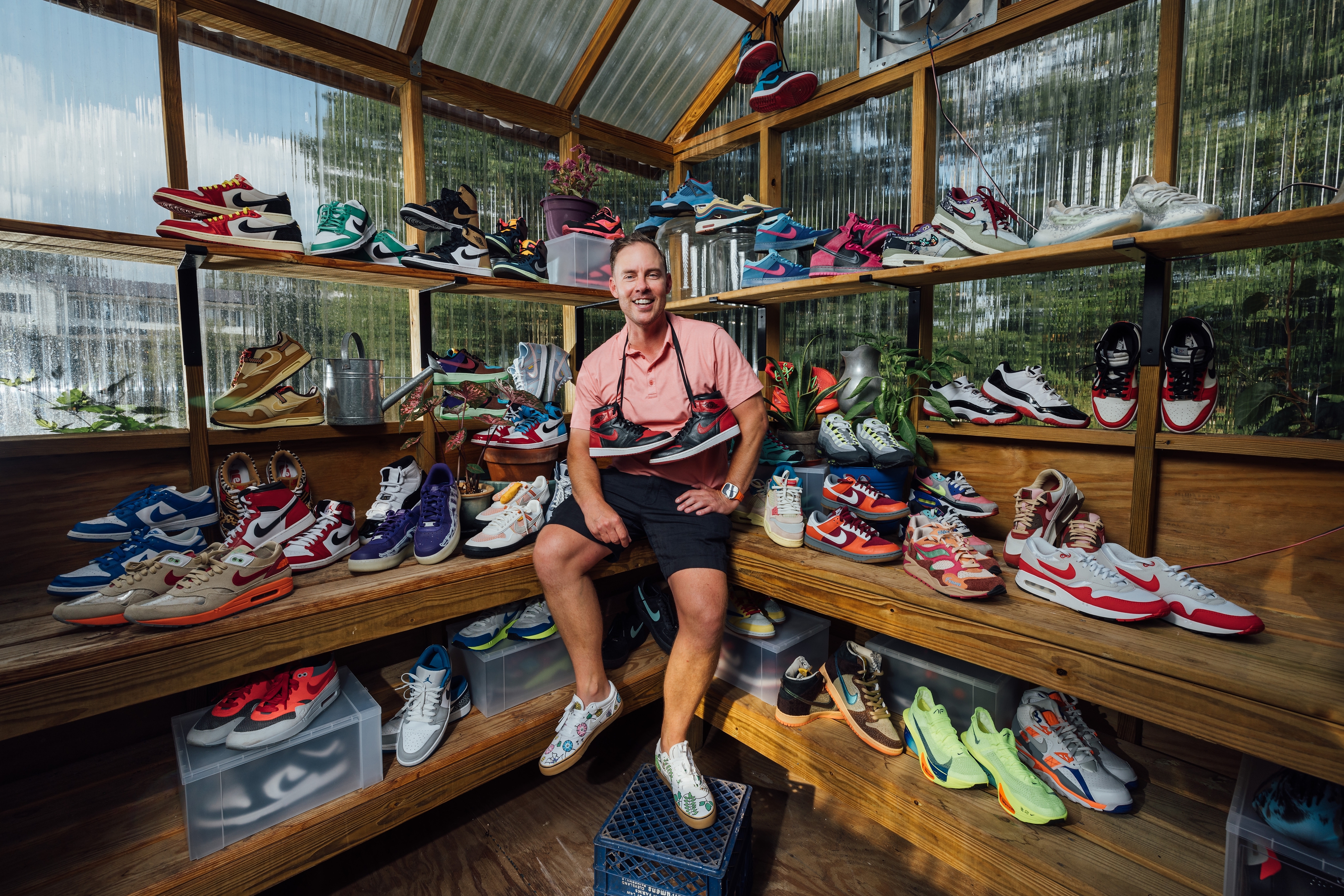
The sneaker collector
Jacob Barney, professor in the School of Plant and Environmental Sciences
I'm in that generation of people who are buying the things they never had as a kid. My mom used to take my brother and me to Payless and buy us the fake Nike Air Jordans, and we would get bullied mercilessly for our fake sneakers. So as soon as I got a job, I bought a pair of neon Nike Air Max 95s. Then I bought them every time they rereleased. About 10 years ago, I watched a documentary on sneaker collecting and I realized, “Oh, that's a thing.” Now I have 100 pairs: mostly Nike Air Jordans and Air Maxes, but also a bunch of other random sneakers. I wear everything, so I buy what I like.
There’s a tremendous amount of completely useless sneaker knowledge in my brain. For me, other collections have come and gone, but with sneakers, I'm as motivated now as when I started. There is a true dopamine hit when you are after something and you're able to get it. Nike almost always releases new sneakers at 10 am on its SNKRS app, so I’m always looking at my phone at 10 a.m. to see if something’s coming.
I also just like looking at my collection. Every day I build what I’m going to wear from the feet up, and I try to go a whole semester and never repeat a pair. I’ve become known for my sneakers on campus. It’ll even come up on my SPOT evaluations, where they’ll say, “I noticed you repeated sneakers once.” I was recently invited to present to the Board of Visitors on the invasive species Destination Area that I lead, and I struggled tremendously on what to wear. Ultimately, my wife said to me, “You shouldn't wear sneakers today.” So I didn’t.

Shoes hand-painted with invasive plants, Barney's area of expertise, by the daughter of a Virginia Tech colleague.

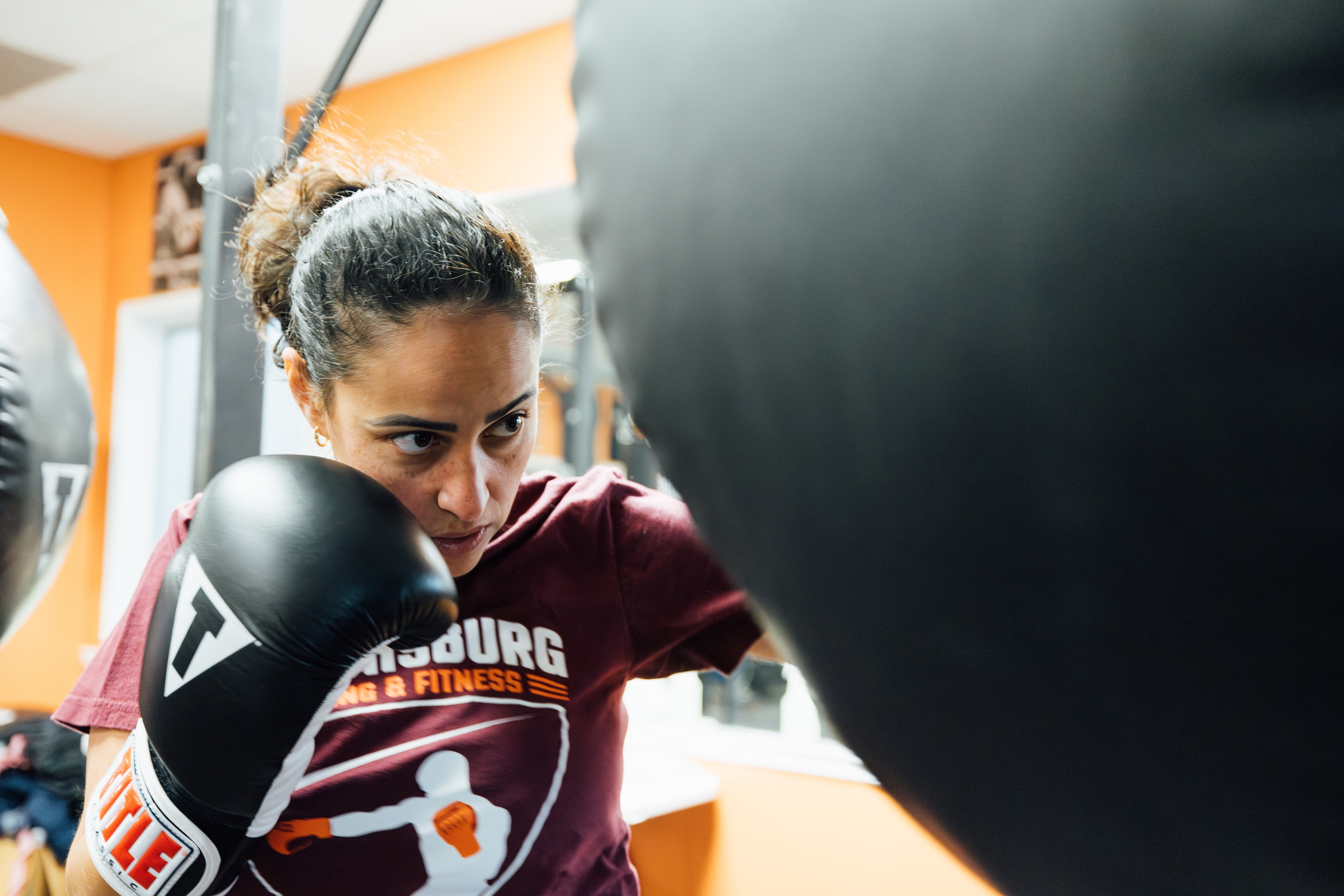
The boxer
Renata Carneiro, research assistant professor of food science and technology
I asked a friend if she wanted to come to a jujitsu class with me, and she was like, “Well, I just started boxing at Blacksburg Boxing and Fitness; why don't you come with me?” I figured learning self-defense could be helpful, so I went and I fell in love with it. It's so dynamic and quick! In a one-hour class, we’re working with ropes and medicine balls, jumping on boxes, and boxing. I’ve learned the jab, cross, hook, and uppercut. Punching the bags is a big stress relief! And I feel much stronger.
Some classes are so intense I just want to lie down for a few minutes and recover afterward. At the same time, the mental part of me gets a rest. Because we’re changing activities every minute and 30 seconds, I’m forced to disconnect from work, because I need to focus on the exercise and not think about the grant I need to apply for on Friday.
I tried to snowboard. I failed. I broke my wrist. I was like, “I don’t think I should be this adventurous anymore.” But sometimes we just need to be open and expose ourselves to different things. I’ve tried so many other exercises. The classes here, we’re a match. It was like figuring out what I wanted to study. I had to try a lot of things first.
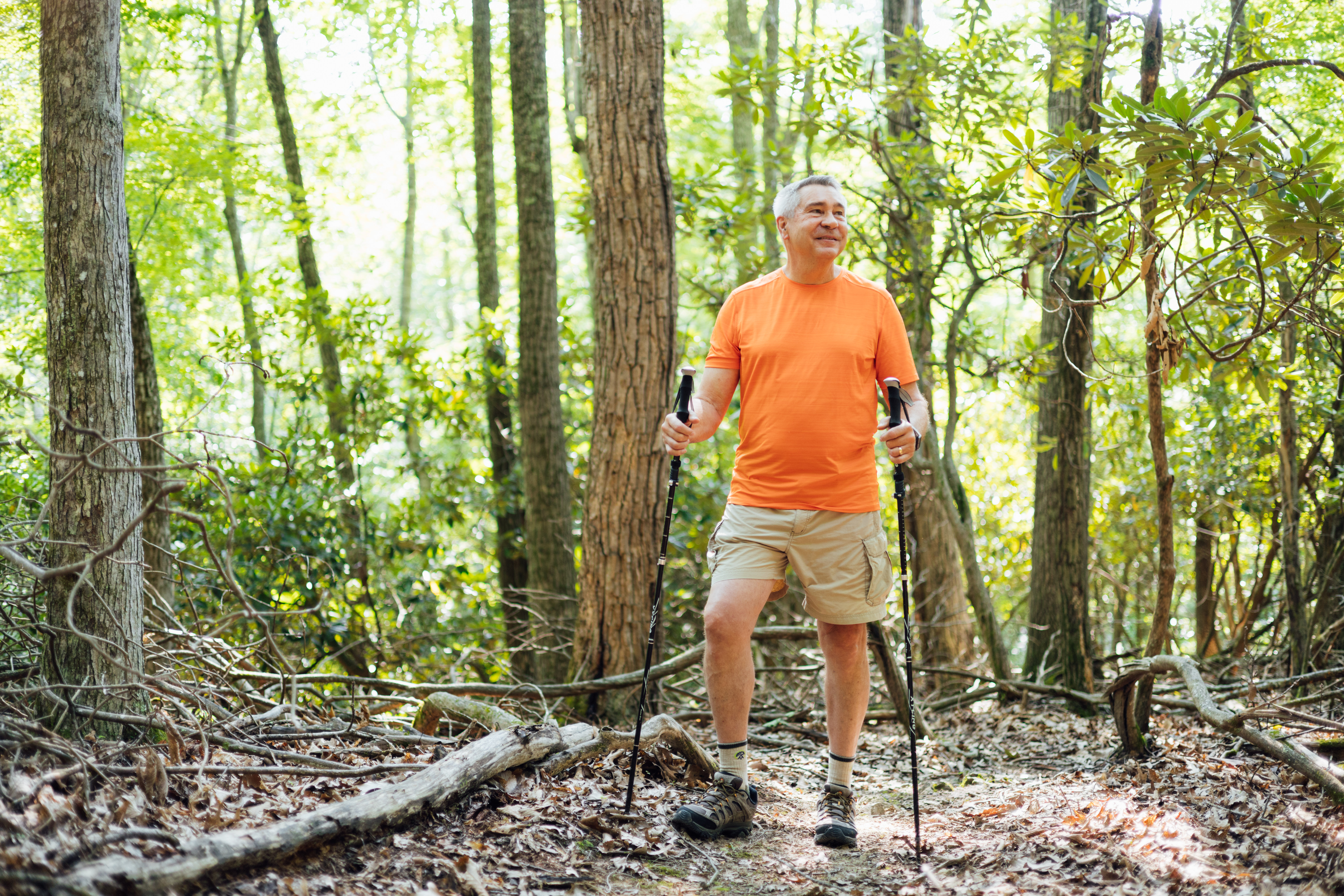
The hiker
Don Taylor, executive vice provost and Charles O. Gordon Professor of Industrial and Systems Engineering
After my third knee operation in 2004, I couldn’t run anymore, and I decided I needed a fitness goal. That’s when I decided to walk the Appalachian Trail. It took me a little over six years to section-hike all 2,197 miles. I’d do the nearby sections on weekends, then I’d use my summer vacations to do the distant parts. One day I was hiking with friends in the Presidential Range in New Hampshire, which is known for having some of the worst weather in the world. Up top above the timberline there was no cover, and you could hear thunder rumbling in the background. I guess my friends were going a little slower than I thought we should be going, and I complained once too often. That’s how I picked up my trail name: Dr. Doom.
For me, hiking is therapeutic. Having a goal motivates me, but the daily task is enjoyable. I tend to be a hiker that never stops. I might sit down for 10 or 15 minutes for a quick lunch, but other than that, I just want to walk. Sometimes I’m working through a problem in my mind, but sometimes I can go for several miles and think of nothing. The time just passes. There’s nothing really to worry about except the next hill, or the next water crossing, or where you're going to sleep. Although once I had a standoff in New Jersey with a black bear that charged me. I made a lot of noise and raised my arms, and the bear kind of huffed and puffed and paced for a minute, then ran off. After that, I hiked with bear spray.
My wife had been incredibly patient with me while I pursued my hiking goals, most often in northern New England. And she said, “Maybe you should have a goal that's not so far from home.” Now I'm casually working on the Tuscarora Trail, which starts in Shenandoah Park and goes up into Pennsylvania. I also go once or twice a year to Vermont, where I’m on the board of the Green Mountain Club. I spend time on my favorite Green Mountain trails and enjoy the gorgeous glacial lakes in the Northeast Kingdom.
But on days when I’m really busy, I’ll just do a few laps on the trail I built in my backyard, a 7/10-mile loop with switchbacks heading down to a little creek at the bottom of the hill. There’s just something special about being outdoors.








